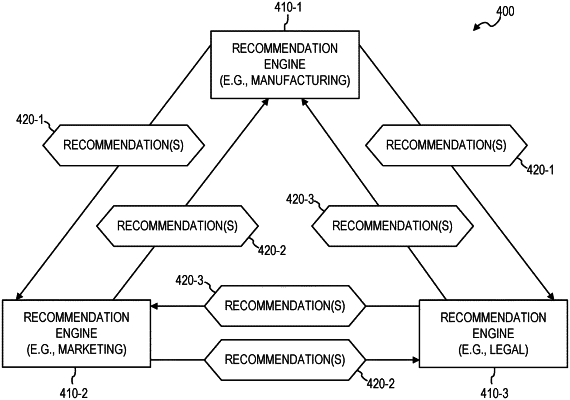| CPC G06Q 30/0631 (2013.01) [G06F 16/9535 (2019.01); G06F 18/217 (2023.01); G06N 20/00 (2019.01)] | 20 Claims |

|
1. A computer-implemented method comprising:
receiving, by a base recommendation engine implemented using at least one hardware processor, a recommendation request from a computing device;
generating, by the base recommendation engine, a first plurality of recommendations based on the recommendation request using a base recommendation model;
obtaining, by the base recommendation engine, a corresponding set of one or more other recommendations from one or more other recommendation engines, each one of the one or more other recommendation engines being configured to generate the corresponding set of one or more other recommendations based on the recommendation request using a corresponding recommendation model different from the base recommendation model;
for each of the one or more other recommendations engines, obtaining, by the base recommendation engine, a corresponding weight for the other recommendation engine from a database;
selecting, by the base recommendation engine, at least one recommendation from the first plurality of recommendations and each corresponding set of one or more other recommendations from the one or more other recommendation engines using each corresponding weight for each set of one or more other recommendations from the one or more other recommendation engines;
causing, by the base recommendation engine, the selected at least one recommendation to be displayed on the computing device;
receiving corresponding feedback data for each one of the selected at least one recommendation, the feedback data indicating whether a user of the computing device selected to perform an online action directed towards the corresponding one of the selected at least one recommendation; and
using the received feedback data as training data in at least one machine learning operation to modify the corresponding weight of at least one of the one or more other recommendation engines stored in the database.
|